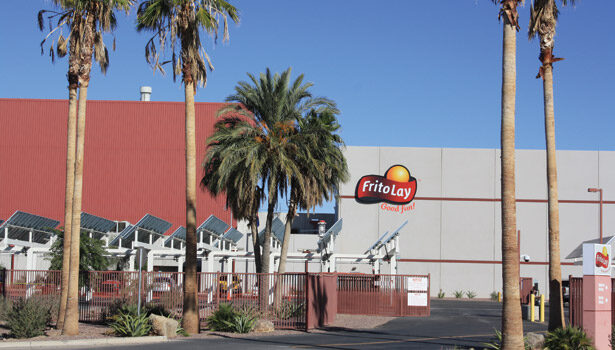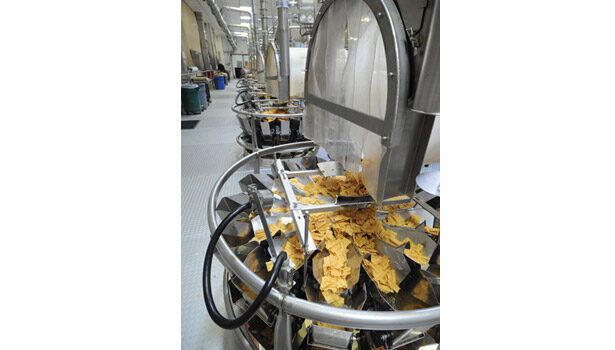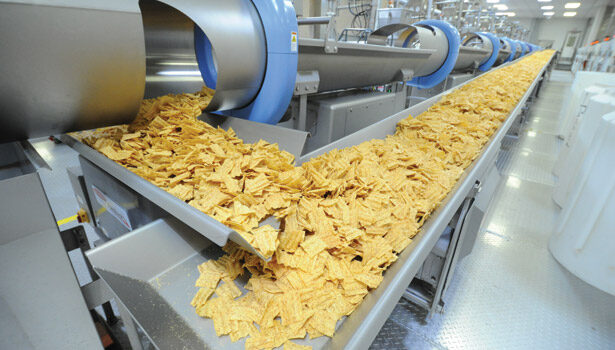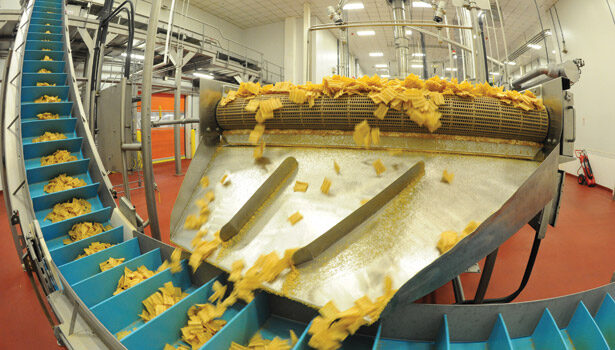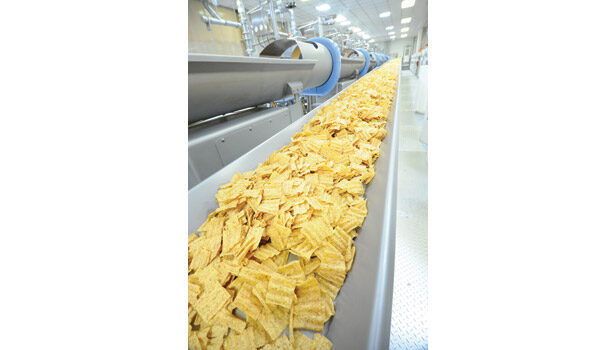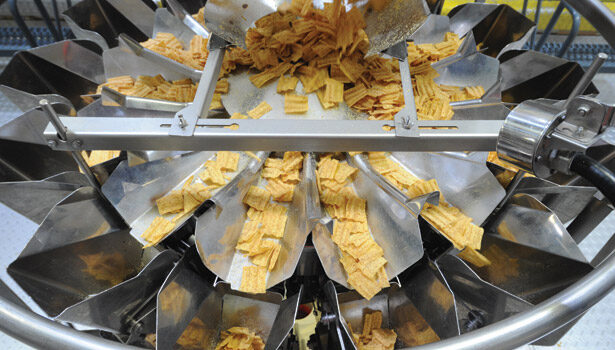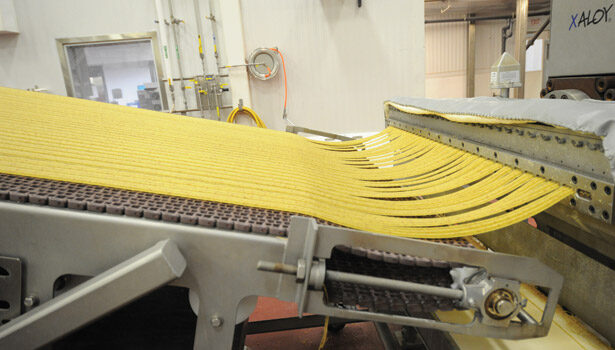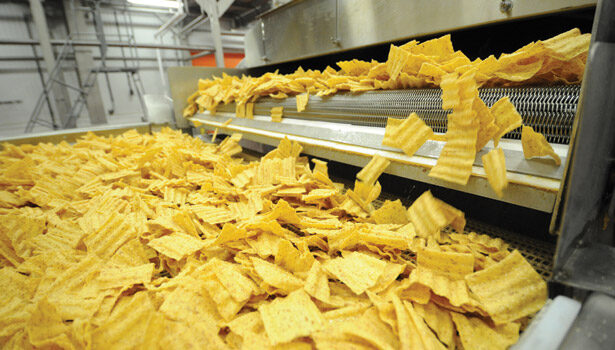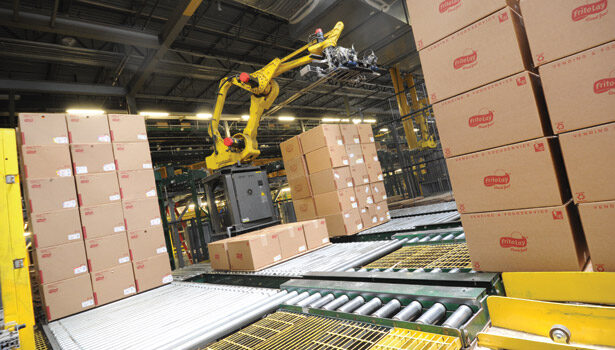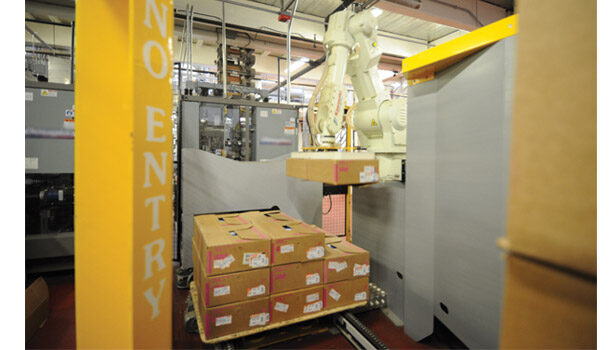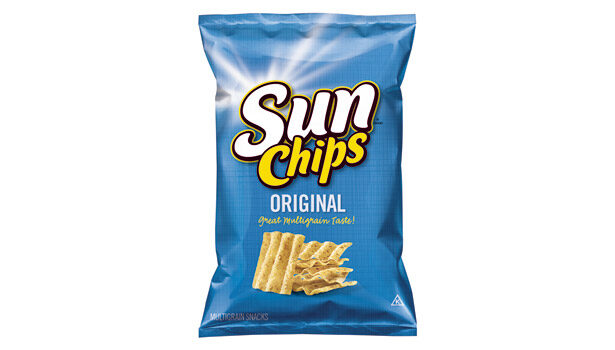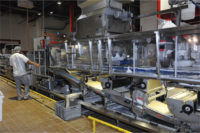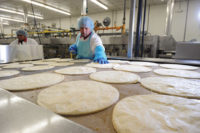Chipping in for a “greener” future, Frito-Lay North America’s snack manufacturing facility in Casa Grande, Ariz., is the company’s first Leadership in Energy and Environmental Design (LEED) Gold snack unit—a remarkable achievement in its own right. But the plant, which Frito-Lay calls its Near Net Zero project showcase, is also the result of a highly ambitious sustainability project that took the location “off the grids,” running primarily on renewable energy sources and recycled water, while producing zero landfill waste. The plant could be the most sustainable food production facility of its kind in the U.S.
All of Frito-Lay’s 40 plants in the U.S. and Canada have since developed their own Near Net Zero (NNZ) plan, but not all can achieve what the company was able to do at this site, which Snack Food & Wholesale Bakery toured in July.
Opened in 1984, the snack plant serves a seven-state delivery network and has 380 employees. Built on about 280 acres of land totaling 170,000 sq. ft., with 160,000 sq. ft. under one roof, the Casa Grande location operates in Frito-Lay’s Mountain Region as a core facility that makes the company’s standard core snack products in various package configurations: Crunchy Cheetos cheese snacks, Fritos corn chips, Doritos, Santitas and Tostitos tortilla chips and Lay’s and Ruffles potato chips. Altogether, the plant produces 250 stock-keeping units (SKUs) on five production lines and operates 24 hours a day, seven days a week.
The NNZ sustainability project began in 1999 [see Cover Story]. “When we started with the concept, it really was a way to take a manufacturing plant off of the grids,” explains Al Halvorsen, director of environmental sustainability for Frito-Lay’s parent, PepsiCo. “That means off of the water, electric and natural gas grids. That was the foundation of the project and it started the ball rolling. We’re not quite at Net Zero yet, but we’re pretty close.”
Among its many accomplishments, the leading-edge facility generates 66% of all its energy from renewable sources. The large complex includes a biomass boiler that creates enough renewable steam to serve all of the manufacturing plant’s needs and reduces natural gas use by more than 80%; a water reclamation/treatment facility installed in 2010 with a membrane bioreactor (MBR) and low-pressure reverse-osmosis technology recovers/reuses 75% of the facility’s process water; and acres of single- and dual-axis solar tracking panels that include five separate and distinct solar photovoltaic (PV) fields generate nearly 10 million kilowatts of electrical power; two fields of single-axis tracking PVs, equipped with more than 18,000 solar panels, were installed on 36 acres of the facility’s agricultural (former cropland) property; and three additional PV fields are outfitted with a dual-axis solar-tracking system, 10 Sterling engine, dual-axis tracking systems and a single-axis tracking system that doubles as a covered parking lot for staff and visitors.
The company also has a highly efficient fleet program that involves an environmental strategy. Several of the trucks at the plant are equipped to run on natural gas or electricity, with the goal being to cut by 50% fuel consumption by 2020. “We have tractor/trailers that use compressed natural gas versus diesel fuel,” Halvorsen says.
The production plant produces about 94 million lb. of snacks each year. The main plant houses five chip frying lines, 40 bagmakers, new overhead seasoning systems in the case of the multiple-line SunChips operation, a 70,000-sq.-ft. automatic storage/retrieval warehouse with nine-pallet-high storage (one of the company’s first such systems) and four robotic palletizing units.
In the bag
“We have an alternate workweek schedule,” explains Ronaldo Luna, maintenance/engineering director. “Not all lines run each day, because we shut them down for cleaning, sanitizing and maintenance. The five lines are also dedicated to specific products—so, for example, Fritos, Doritos and Cheetos run on their own specific lines.”
Production of SunChips, which coincidentally debuted on the market packaged in biodegradable bags, is obviously done in very large volumes. Installed a few years ago, the SunChips “line” is actually multiple lines housed in a recently added, 40,000-sq.-ft. area of the plant that’s large enough to accommodate additional production in the future. “It’s a multiple-product production line,” Luna says.
The bagging section has nine vertical form/fill/seal bagging systems, all with overhead seasoning applicators. “This allows us to potentially add more new flavors and more SKUs, so instead of having one large tumbler seasoning the chips, this setup works with several flavors and bag sizes,” he adds.
The SunChips line extends from the main processing floor to packaging on a mezzanine level. It runs various flavors of SunChips and packages them in bag sizes from 1-23 oz. at speeds averaging 100 bags/min.
LEED-ing the way
The production of SunChips starts with raw ingredients, such as corn, which are stored in large exterior silos that have two to five bays of storage capacity, according to Halvorsen. Oil is also stored in silos and other ingredients are warehoused in sacks. The corn is cleaned, cooked, ground into masa and brought into the production room, where it’s blended with other ingredients in a large tank and mixed in one of five 500-900-lb. batch mixers.
“We don’t store potatoes in bulk because we’re processing them quickly, all the time, so they arrive by railcar,” Halvorsen adds. The cooked mixture is then transferred to an extruder, which generates masa in a specific thickness and width. The masa then travels through a set of dies that afford long, wavy ribbons of the mixture, which are sheeted out before they head to a fryer. The dies have multiple openings so the ribbons of mixture take on the wavy, ridged shape of the resulting chips.
Next, the ribbons are cut crosswise by a rolling knife into individual chips, which then progress on a wide conveyor belt into a 50-ft.-long fryer where they remain for about two minutes at approximately 350° F. Any excess is gathered in a container and sent off for use as cattle feed. The line fries about 3,400 lb. of product an hour.
After frying, the chips exit the system and dump onto a cooling belt fitted with a wire mesh that removes some of the frying oil. Then, the chips funnel through a laned chute, into a multibucket elevator that carries them up to the mezzanine level. Just prior to entering the packaging room, the chips deposit onto a series of horizontal fast-motion vibratory conveyors that gently settle them and spread them out before they head to a series of nine high-speed multihead weighers.
“We have a holdover tank for the oil,” Halvorsen points out. “So instead of shutting down at the end of the week, we’re adding oil and reusing what’s left. We transfer the oil to a treatment area, filter it, cool it down and bring it back in to be reused.”
Overhead seasoning
On the mezzanine level of the room, the chips then transfer to a set of nine 14-head weigh-scale stations, each equipped with automatic overhead seasoning tumblers, which season the chips just prior to packaging. The weigh scales electronically indicate to the seasoners how much seasoning to add. “Usually, we add the flavoring right after frying on the other lines, and then the chips are packaged,” says Luna. “On this line, we season the product right on top of the bagging equipment, which gives us the opportunity to run different flavors of the chips at the same time. This gives us enormous flexibility and reduces downtime as well.”
The technology was developed in-house. “We’re taking our packaging automation to the next level and are investing in [developing more of] it,” Halvorsen adds. “It has taken us a while to get there, but we think this is the technology of the future.”
The weigh-scale buckets lead down to nine vertical form/fill/seal baggers on the main production floor that produce bags in different sizes, depending on the production run. The filled, sealed bags exit onto a transfer belt leading to a set of continuous-motion case erector/packer/sealers that function with two-way corrugated reshippers that are reused to and from retail outlets numerous times.
The filled, sealed cases are efficiently loaded onto pallet-sized boards in specific pack patterns by the arms of robotic palletizers. As tall as 11 cases high, the loads
are labeled and a forklift transfers them to the warehouse, where they’re secured onboard a truck with a few turns of stretch wrap. The driver then brings the load to
the computerized, automatic storage/
retrieval system, which is operated with minimal staffing.
The sophisticated, computerized storage/retrieval network in the nine-rack-high warehouse has enough storage capacity for five days’ worth of inventory. Sensors on the rail lines within the storage/retrieval network identify coded “license plate” labels on the pallet loads and direct the loads to the proper conveyor lanes and bay positions on the racks so that the plant can keep track of each case’s location at any given time.
Energy partnerships
Halvorsen also points out that the plant and Frito-Lay in general are very involved with the Environmental Protection Agency’s (EPA) Energy Star program. “We have been an Energy Star Partner of the Year since 2006,” he says. “In 2007 and 2008, PepsiCo was recognized as an Energy Star partner. For the last five years, we have been Energy Star Sustained Excellence partners. It’s a great program in which we have enjoyed participating and will continue to actively participate. It’s a great opportunity to share and learn energy-reduction strategies and energy-conservation partnerships with them and with other industries.”
Like other Frito-Lay facilities, the Casa Grande plant is also audited annually by the American Institute of Baking (AIB) and is rated highly, Halvorsen notes. “We also have many food safety processes in place throughout all of our manufacturing operations.” Future environmental initiatives at the plant will be part of the ongoing program, he says, and plant personnel will continue to maintain and improve upon the efficiencies already established. “To be prepared for the future, we’re recycling water and working on reducing costs and the environmental impact at all of our manufacturing plants every year,” he says.
Investment in the future
Just as Frito-Lay wants to be on the cutting edge of giving consumers exactly what they want in its abundant portfolio of snack foods—be it exciting new flavors, better-for-you, low-fat, low-salt, multigrain or full-flavored—the company also wants to be sure it’s around for years to come.
“We look at sustainability as an investment in the future,” Halvorsen says. “Just like we’re investing in research and development for new products or packaging, and investing our profits and returns back into those, we look at this as an R&D investment per se for energy recovery; we don’t need it today, but we’ll probably need it tomorrow and need to be prepared for that.”
